You are currently exploring the Fundamentals Library, which is designed to provide a basic overview of the topics that are covered in other longer articles. This article is a part of the Mechanics section.
Kinetics
Movement analysis can be split into two directly related categories:
- Kinematics
- Kinetics
Kinematics is the study of motion, while kinetics is the explanation of motion. In kinematics of the human body we simply analyze and name motion, while in kinetics we look at the forces that interact with our body and analyze their influence.
It is worth taking a closer look at the concept of force and understanding what it is and how it works. When we understand its basics, we can analyze calisthenics exercises and anticipate their effects on the body.
In this article we will focus on static conditions, which are the basis for understanding dynamic conditions (the effects of speed and acceleration).
Force
It's worth starting with the basic description of what force is. Although it sounds trivial, it is actually something we rarely think about. Force is defined in physics as something that can change the velocity (accelerate) of an object with mass. So if we have an object with mass and we apply a force to it, that object will change its velocity unless there are other counteracting forces that have an opposite effect.
It is a vector quantity, which means it has its:
- Point of application
- Line of action
- Direction
- Magnitude
The basic unit of force that expresses its magnitude is newton [N].
Force is often confused with other terms such as mass or weight, which is understandable because we often associate force with kilograms, for example, when we weigh ourselves or lift weights at the gym.
However, the kilogram is the unit of mass, not force or weight. Weight is basically the force exerted by gravity on an object with mass.
3rd Newton Law
When you push on the wall with your hand, you exert a certain force that can be expressed in Newtons.
Newton's third law says that when two bodies interact, they exert forces on each other that are equal in magnitude and opposite in direction. This means that I push the wall and the wall pushes me. This law can be used effectively when analyzing exercises.
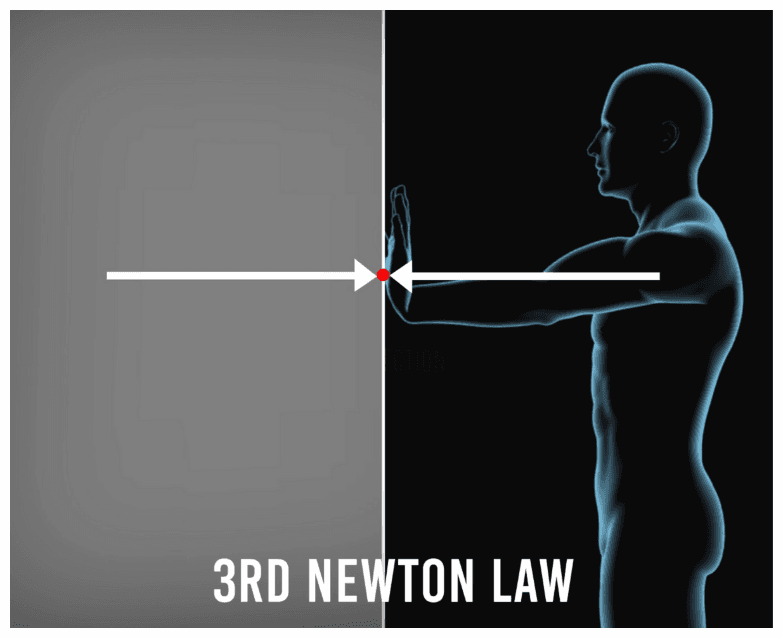
Gravity
There is the force that we are constantly exposed to on Earth, which is the force that is the effect of gravity. Gravity can be thought of as the attraction between two masses. Therefore, the effect of gravity depends on the mass of an object on Earth.
The force can be calculated by multiplying the mass of the object by the acceleration of the Earth, which we round to 9.8 m/second square. For example, if my mass is 80 KG, gravity will "pull" me with a force equal to 784 Newtons (784 Newtons is actually my weight).
The direction is always down toward the center of the Earth, and the magnitude depends on the mass of an object, as the gravitational acceleration will remain roughly the same. Interestingly, there may be some differences in gravity due to altitude, proximity to the equator, and local geology, but they will be half a percent at most.
When it comes to the point of application of this force - there is a point on every body that resembles the place where gravity acts. We call this point the center of mass or the center of gravity (the two are basically interchangeable under typical conditions).
Think of it as the hypothetical concentration of mass of the object. Individually, each segment of the body has its own center of mass. Collectively, our body also has its own center of mass. COM, however, is not fixed, but changes according to the shape of our body. If I stand in the anatomical position, my center of mass may be somewhere at the level of the navel. When I raise my arms, it moves up.
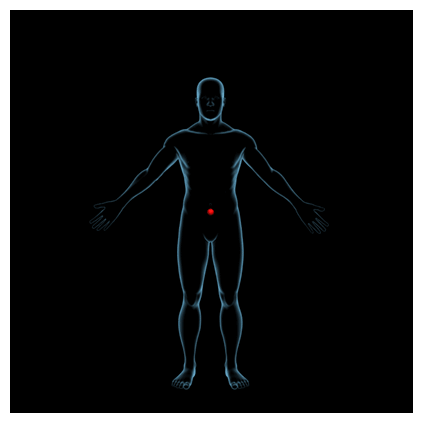
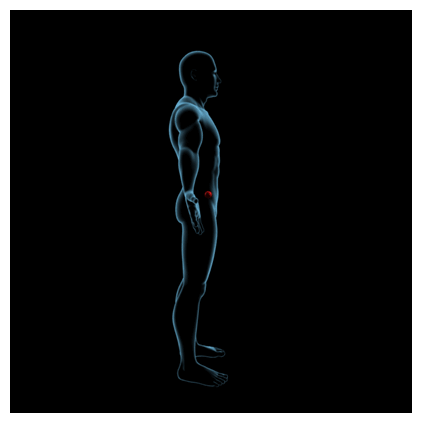
We can analyze the position of the center of mass in different planes. You can take a look at this example of planche, and the position of the center of mass when looking from the side and from the front.
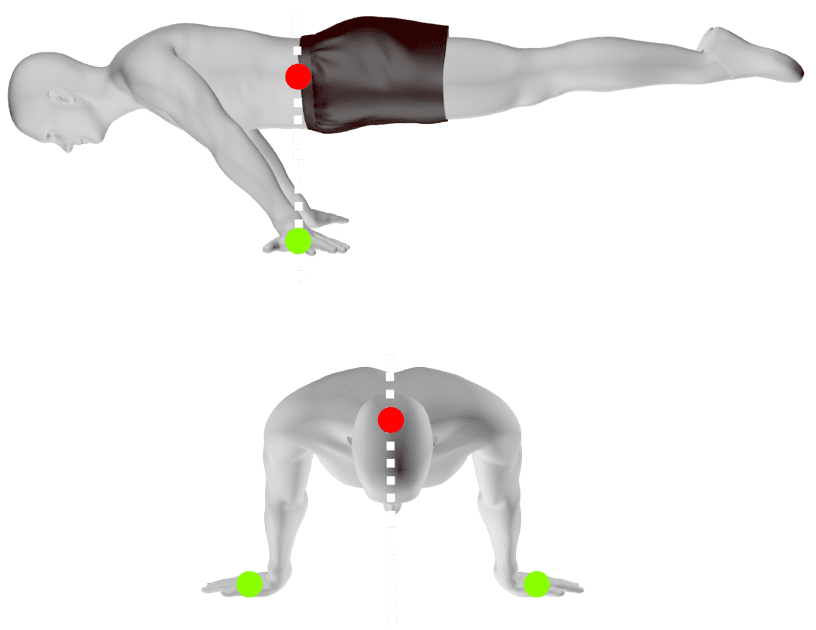
Force Resultants
Most of the time we deal with a couple of simultaneously working forces on one object. In this situation we can treat them as the resultant of forces.
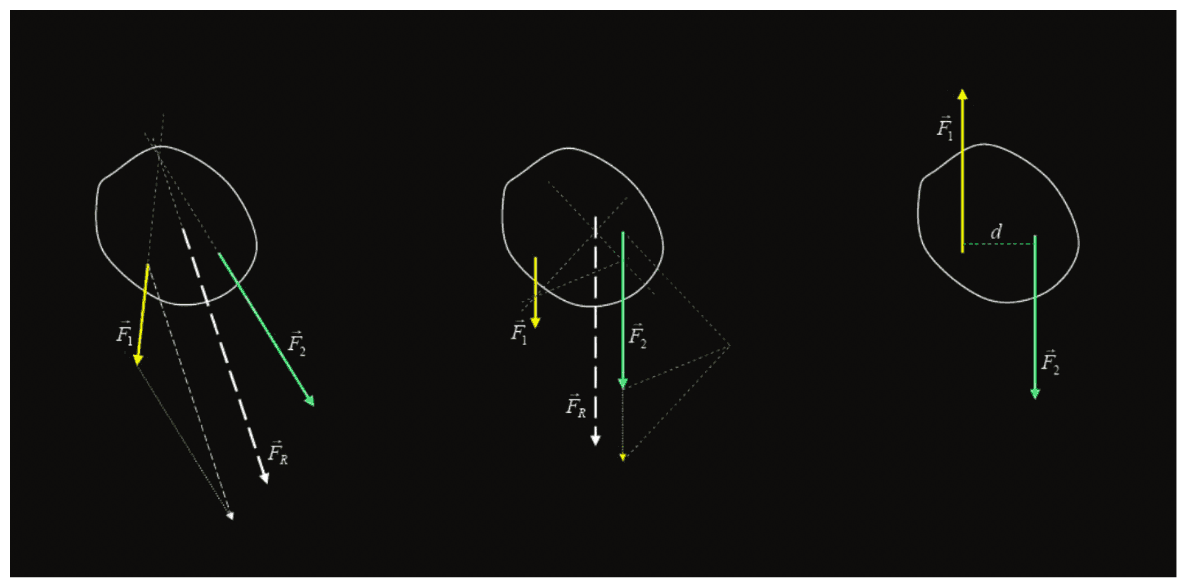
If you think about it, resultant forces are actually what happens in real world scenarios. When we push on something with our hand, we are actually pushing with a surface, and every part of that surface is exerting a force on the object we are pushing on. We can draw the resultant of these forces as a single vector that is a sum of these forces.
Torque
So we already know that force is always linear. Movement however can be linear, but it can also be rotational. And in the case of human motion and joints, we are mainly talking about this rotational component. This is where we need to uncover the new term, which is torque, also known as moment.
Think of torque as the effectiveness of force in causing rotation. Imagine there is a joint and a segment attached to it. To cause the joint to rotate, we need to apply a force to the segment. However, the effect of this force depends not only on the magnitude of the force, but also on where the force is applied.
The effect of the force is modulated by the perpendicular distance from the pivot point (center of rotation). This perpendicular (or shortest) distance is known as the moment arm.

The greater the moment arm, the greater the effectiveness of the force. Therefore, if you have ever played or witnessed a playground seesaw with people of very different masses, you know that you can easily change the outcome by having a heavier person sit closer and a lighter person sit further.
Torque is therefore dependent on two things:
- the magnitude of applied force [newtons]
- moment arm [meters]
The unit of torque is newton-meter.
Because we simplify most of the movements in our bodies to rotations, torque is basically the essence of exercise and physical strength.
Imagine you are doing a biceps curl, your bicep is pulling on the bone at a certain point where it is attached. By pulling on the bone, it creates a torque in the elbow. The opposite torque is generated by gravity pulling on your forearm and on the dumbbell, and as you remember, we can visualize it by vertical lines from the center of mass of these two objects.
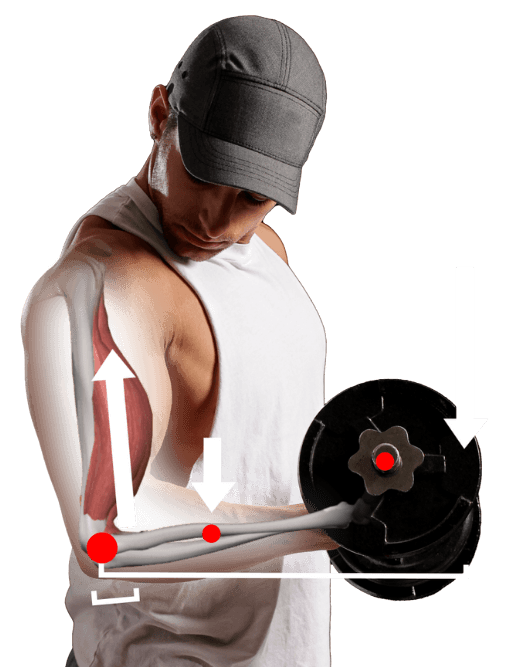
Internal & External Forces
As you can see, there are many forces that will play on the body and generate torques. When it comes to internal forces that come from our body we have:
- Muscles pulling on the bones
- Ligaments
- Bones acting on each other
- Joint capsules keeping joints together
- Soft tissues getting compressed
External forces can be put on our body through:
- Gravity
- Elastic resistance
- Friction
- Air/water
- Inertia (more about that in the next article)
It is important to be aware of this before we discuss the specifics of any type of resistance or assistance in exercise.
It is also important from the standpoint of a more thorough analysis and understanding of the different effects that forces have on our bodies. For example, the distraction and compression forces and the shear and friction forces that occur in our joints during movement and exercise.
These are more important from a rehabilitation standpoint, but it's worth being aware of how many forces our bodies are exposed to in different ways.



